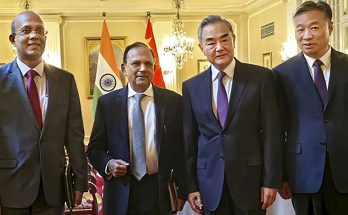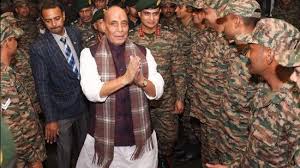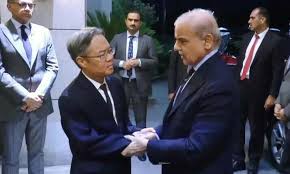T he rise of China and India is set to change the rules of the game in international politics in many arenas. Western analysts maintain that Africa and Latin America provide a test for the Asian giants as to how they intend to behave as rising powers. The energy and resource sectors represent the most dynamic part of the economic relations that China and India have forged with Latin America. The region’s importance in the world energy market and its potential are certainly attractive to the two Asian giants.
he rise of China and India is set to change the rules of the game in international politics in many arenas. Western analysts maintain that Africa and Latin America provide a test for the Asian giants as to how they intend to behave as rising powers. The energy and resource sectors represent the most dynamic part of the economic relations that China and India have forged with Latin America. The region’s importance in the world energy market and its potential are certainly attractive to the two Asian giants.
In terms of trade and investment with both the regions, China enjoys a clear edge over India. China is not just elephant in the room, it is a fire-breathing dragon. China’s trade with Africa and Latin America has grown exponentially in recent years. For countries like Brazil and Chile, China has emerged as the largest export destinations. But China’s stronger presence and aggressive trade deals have begun to generate concerns in many of these countries over the Asian behemoth quickly outcompeting them. Will the concern become a backlash?
Complaints about dumping of Chinese goods can be heard across the continents. Given China’s aggressive bids to acquire large areas of agricultural land, Argentina, Brazil and Uruguay have placed restrictions on foreign ownership of such properties. A report titled Beijing, Banks and Barrels: China and Oil in Ecuadorean Amazon shows how Ecuador’s dependence on Chinese loans has pushed the Andean nation to open up its Amazon to large scale industrial and extractive products. Ironically, while Ecuadorean President has publicly indicted China’s demands as “barbaric and humiliating”, his government has privately pushed forward controversial and secret deals with Beijing.
Resentment is growing in many parts of Africa and Latin America against China, reducing them as mere suppliers of raw materials. The uncouth behaviour of some Chinese people has also begun to anger them. Only a few days ago, China’s foreign ministry condemned the “bad habits” of their nationals. In an interview with Guangzhou-based Southern Metropolis News, China’s ambassador to Tanzania Lu Xinsheng admitted that Chinese businessmen “smuggle ivory and rhino horns out of the country and flood local markets with counterfeit goods” while contractors constantly try to undercut each other, resulting in shoddy infrastructure projects. “Our bad habits have followed us.”
Indian model of engagement
How is India doing in Africa and Latin America? Is India trying to catch up with China’s operating behavior? Or does India enjoy additional legitimacy for being a democracy? Both China and India compete for same energy sources and other minerals. China’s unstoppable growth and its voracious appetite for food, fuel and metals in Latin America has moved the economy back to reliance on raw materials. The raw materialisation of the economy has meant aggressive takeover of land and resources. Some have expressed fear of becoming ‘incorporated colonies’. One analyst describes China’s growing presence as ‘Sinicization of Latin American economies.’
Given the ever-growing engagement of China and India in the Latin American region, some American pundits contend that Washington must do some hard thinking about the emerging geopolitical ‘chindia’ challenge, especially in energy and related sectors.
India is not China. It is true that India is moving into Africa and Latin America partly because China has moved in a big way. It is also largely true that both are competing for same energy resources and infrastructure deals. And yet, despite the hype in the media that the ‘marching elephant’ is pitted against the ‘flying dragon’, India has neither the desire nor the capability to compete with China. India has its own pragmatic reasons to engage these regions.
If India’s gaze is falling on Latin America, the ‘Old World,’ too, is ready to play ball with India. What has changed now? India is definitely looking for markets but also raw materials. The Asian Development Bank suggests that India has the potential to mirror the recent economic performance of China. More importantly, the ADB Study says that “India is Latin America’s next big thing.” Over the years, Latin America has changed beyond recognition. It is no more a metaphor for civil strife, endemic violence and a cockpit of US machinations and meddling.
India had had many opportunities to forge close and mutually beneficial partnerships with Latin America. Our approach to Latin America has been largely to procrastinate, to defer, to postpone and to buy time till hot button turns cold. Our leaders never found time to undertake long trips to Latin America. If we exclude multilateral meetings, hardly any Indian prime minister visited the region twice. Way back in 1968, Indira Gandhi undertook a whirlwind tour of 10 Latin American countries. To her, the visit was a voyage of discovery. Strangely, Indira Gandhi described her visit as an effort to establish a “concord with people who are strangers to us.” Hopes aroused by her visit of turning a corner proved short-lived. In contrast, see how China has been cultivating the region.
China’s diplomacy in Latin America
 President Xi Jinping has visited 10 Latin American and Caribbean countries since 2009(even as vice president, he was a frequent visitor to Latin America). After the BRICS Summit, he undertook visits to Argentina, Venezuela and Cuba. Last year, he was in Trinidad & Tobago, Costa Rica and Mexico. Since the new Chinese leadership assumed office, Beijing has highlighted the importance of Latin America, highlighting how China’s trade with the region is below its potential.
President Xi Jinping has visited 10 Latin American and Caribbean countries since 2009(even as vice president, he was a frequent visitor to Latin America). After the BRICS Summit, he undertook visits to Argentina, Venezuela and Cuba. Last year, he was in Trinidad & Tobago, Costa Rica and Mexico. Since the new Chinese leadership assumed office, Beijing has highlighted the importance of Latin America, highlighting how China’s trade with the region is below its potential.
In June 2011, Chinese Premier Wen Jiabao visited Brazil, Uruguay, Argentina and Chile. The same month President Hu Jintao was in Mexico on a bilateral visit. The same year, besides Vice-President Jinping’s visits to Cuba, Uruguay and Chile, a China-Latin America Business Summit in Peru saw the participation of 400 Chinese officials and business people. In fact in 2001, President Jiang Zemin undertook a 13-day trip to Latin America. How does the Chinese leadership finds time to undertake such visits while Indian leaders don’t? During the earlier NDA government, except for some multilateral visits, there were practically no bilateral visits to Africa and Latin America at the level of prime minister, for India was perhaps too mesmerised by New Delhi’s new ties with the US, the European Union and ASEAN countries. Shashi Tharoor, seeking support for his bid to become the UN Secretary-General found, to his bewilderment how cold, if not hostile, these regions had become. Tharoor’s suave diplomatic demeanour and immaculate French didn’t impress the Africans, for New Delhi had taken their support for granted.
In less than 20 years, China has become the biggest trading partner of Brazil, Chile and Peru and it is all set to overtake the European Union as the region’s second largest trading partner by 2016. India’s reluctant partnership is of course no match for China’s blank cheque diplomacy in Latin America. While practically all Latin American country, including very small ones, now have diplomatic presence in Delhi, in the last decade we have hardly opened any new mission there. This is not how great powers behave. India has fewer diplomats and officials than even Singapore.
Over the years, if India has started blipping on Latin American radar, the credit should go to the Indian companies who have made significant investments in software, pharmaceuticals, business software and natural resources. The Indian information technology industry, in particular, is now looking at Latin America as the next frontier. In the last 15 years or so, Indian companies have invested about $12 billion in sectors like IT, pharmaceuticals, energy, mining, agro-chemicals and manufacturing. The presence of Tata Consultancy Services, Dr Reddy’s Laboratories, ONGC Videsh, Videocon and Shree Renuka Sugars is now quite significant.
 India today punches below its weight and potential on global issues even though it is dreaming big. Taking the country all the way to the high table in the UN requires building alliances and partnerships. India lost its clout in Africa long ago and it never bothered much about Latin America. There has to be a strategy to cultivate Latin America. The habits of keeping silent and maintaining appearances underlie the attitudes, opinions and behaviours of Latin American people. Octavio Paz describes this attitude as a ‘smiling mask’.
India today punches below its weight and potential on global issues even though it is dreaming big. Taking the country all the way to the high table in the UN requires building alliances and partnerships. India lost its clout in Africa long ago and it never bothered much about Latin America. There has to be a strategy to cultivate Latin America. The habits of keeping silent and maintaining appearances underlie the attitudes, opinions and behaviours of Latin American people. Octavio Paz describes this attitude as a ‘smiling mask’.
Think Big
India again missed an opportunity. Prime Minister Narendra Modi’s meeting in Brasilia with South American presidents was fine, but he should have utilised that opportunity to visit a few countries in the region just as Xi Jinping and Russian President Vladimir Putin did. It is understandable that his meeting with regional leaders was largely ceremonial but he could have announced some measures to bring India’s ties with Latin America on a new pedestal. Modi appeared more like the third world leader of the 1970s quoting statistics like how many students from the region are taking courses in India under International Technical and Economic Cooperation and how Gujarat accounts for more than half of India’s trade with Latin America.
India must think big. Good foreign policy requires prudence. But it also requires boldness and imagination. As Vladislav Surkov, President Putin’s Aide, says, “if you have long legs, you should do the long jumps, not play chess.”
 (The author is Director, Institute of Social Sciences, New Delhi. This article has been written exclusively for India Writes Network, www.indiawrites.org. The views expressed in this article are solely those of the author)
(The author is Director, Institute of Social Sciences, New Delhi. This article has been written exclusively for India Writes Network, www.indiawrites.org. The views expressed in this article are solely those of the author)





